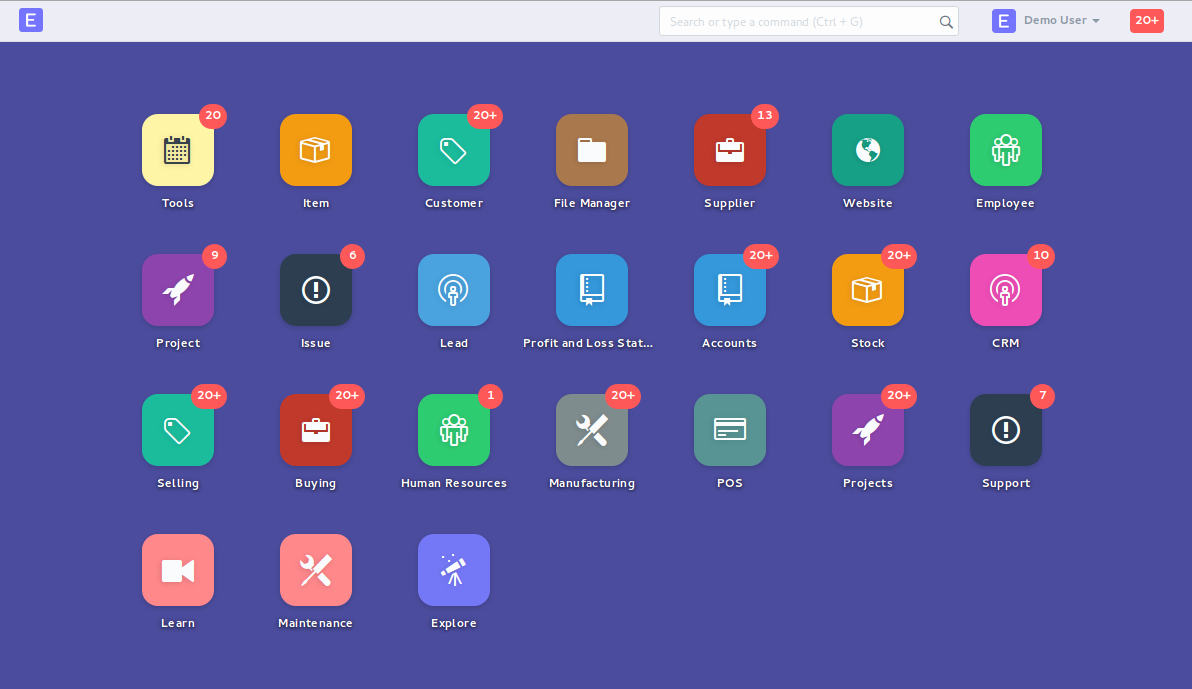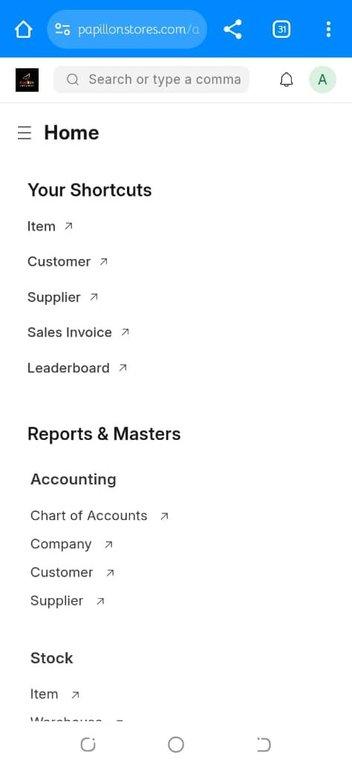ERPNext Vs Other ERPs
Discover why ERPNext is revolutionizing ERP solutions for SMEs. Compare costs, features, and implementation times with traditional ERPs like SAP and Oracle. Learn how small businesses achieve enterpri
ERPNext vs Other ERPs: Why It's a Game-Changer for SMEs
In today's competitive business landscape, small and medium enterprises (SMEs) need powerful, affordable tools to streamline operations and drive growth. Enterprise Resource Planning (ERP) systems have traditionally been associated with large corporations due to their complexity and cost. However, ERPNext is changing this narrative by offering a comprehensive, accessible solution specifically designed with SMEs in mind.
The ERP Challenge for Small Businesses
Before diving into why ERPNext stands out, let's understand the challenges SMEs face with traditional ERP systems:
- Prohibitive costs: Traditional ERP implementations often require six or seven-figure investments
- Complex implementation: Many systems demand 6-18 months for full deployment
- Steep learning curve: Extensive training and adjustment periods reduce productivity
- Inflexible structures: Large ERP systems are often rigid and difficult to customize
- Maintenance overhead: Ongoing support and updates create additional financial burden
These barriers have historically kept powerful ERP capabilities out of reach for many growing businesses—until now.

What Makes ERPNext Different?
1. Open Source Philosophy
Unlike proprietary solutions like SAP, Oracle, or Microsoft Dynamics, ERPNext is built on an open-source framework. This fundamental difference delivers several distinct advantages:
- Transparent codebase: No hidden functions or obscure processes
- Community-driven development: Features are built based on actual user needs
- No vendor lock-in: You retain control over your business data and processes
- Customization freedom: Adapt the system to your needs without excessive costs

2. Cost-Effectiveness That Makes Sense
ERPNext dramatically reduces the total cost of ownership compared to traditional ERP systems:
- No exorbitant licensing fees: Self-hosted options or affordable cloud subscriptions
- Flexible deployment options: Cloud, on-premises, or hybrid models
- Minimal hardware requirements: Works efficiently on standard business hardware
- Reduced implementation costs: Straightforward setup compared to legacy systems
For context, while traditional ERP implementations might cost $100,000+ just to get started, ERPNext can be deployed for a fraction of that amount, with annual costs remaining manageable for growing businesses.
3. Comprehensive Functionality Out of the Box
Despite its affordability, ERPNext doesn't compromise on capabilities:
- Accounting: Complete financial management with multi-currency support
- Inventory: Real-time stock management and warehouse operations
- CRM: Customer relationship tools integrated with sales
- HRMS: Employee management, payroll, and attendance
- Manufacturing: Production planning, scheduling, and quality control
- Project Management: Task tracking, timelines, and resource allocation
- Website & E-commerce: Built-in tools to establish online presence
- Point of Sale: Retail operations management
This integrated approach eliminates the need for multiple disconnected systems, creating a single source of truth for your business data.
 ERPNext's integrated modules provide comprehensive functionality in one platform
ERPNext's integrated modules provide comprehensive functionality in one platform
4. User-Centric Design
ERPNext prioritizes usability in ways that many enterprise systems don't:
- Clean, intuitive interface: Minimal training required for basic operations
- Mobile responsiveness: Work from anywhere on any device
- Contextual help: Built-in documentation and guidance
- Progressive complexity: Start simple and add features as needed


ERPNext's intuitive interface works seamlessly across devices
5. Flexibility and Scalability
As your business grows, ERPNext grows with you:
- Modular architecture: Implement only what you need
- Custom fields and workflows: Adapt to your specific processes
- API-first design: Integrate with other business tools seamlessly
- Scalable infrastructure: From 5 to 500+ users without significant rearchitecting
Real-World Comparisons
| Feature | ERPNext | Traditional ERPs (SAP, Oracle, MS Dynamics) | Other Cloud ERPs (NetSuite, Acumatica) |
|---|---|---|---|
| Initial Cost | $0 (self-hosted) to ~$20K | $75K-$750K+ | $25K-$100K |
| Annual Cost | $0-$80 per user/month | Often 15-22% of license cost | $50-$150 per user/month |
| Implementation Time | Weeks to 3 months | 6-18 months | 3-6 months |
| Customization | Unlimited, accessible | Limited, expensive | Moderate, service-dependent |
| Updates | Frequent, community-driven | Scheduled releases | Vendor-controlled |
| Industry-Specific Features | Growing library | Comprehensive | Varies by vendor |
| Self-Hosting Option | Yes | Limited | Rarely |
| Code Access | Full access | None | None |
Success Stories: SMEs Thriving with ERPNext
Manufacturing Success
A 50-person furniture manufacturer replaced five disconnected systems with ERPNext, reducing inventory discrepancies by 87% and improving production planning efficiency by 40%.
Professional Services Transformation
An engineering consultancy uses ERPNext to track project profitability, consultant utilization, and client satisfaction in one system, improving resource allocation by 35%.
Retail Evolution
A multi-location specialty retailer implemented ERPNext's inventory and POS features, gaining real-time visibility across locations and reducing out-of-stock incidents by 62%.

Making the Transition: Practical Considerations
While ERPNext offers significant advantages, a successful implementation still requires proper planning:
- Start with core modules: Begin with your most critical business functions
- Invest in proper data migration: Clean data is essential for ERP success
- Train key users thoroughly: Internal champions help drive adoption
- Consider implementation partners: Experienced consultants can accelerate deployment
- Plan for process refinement: Use this opportunity to improve workflows, not just digitize them
A strategic implementation approach ensures maximum ROI from your ERPNext investment
The Future of ERPNext
The ERPNext ecosystem continues to evolve rapidly:
- Growing marketplace: Expanding library of extensions and integrations
- AI integration: Emerging capabilities for prediction and automation
- Vertical solutions: Industry-specific templates and features
- Enterprise adoption: Increasing use by larger organizations validating the platform's capabilities
Conclusion: A True Game-Changer
For SMEs seeking enterprise-grade capabilities without enterprise-level complexity and cost, ERPNext represents a paradigm shift in what's possible. Its combination of affordability, flexibility, and functionality makes it not just an alternative to traditional ERPs, but often a superior choice for growing businesses.
By democratizing access to comprehensive business management tools, ERPNext is enabling small and medium enterprises to compete more effectively in an increasingly digital marketplace. The question is no longer whether SMEs can afford proper ERP systems—with ERPNext, it's whether they can afford not to implement one.
Whether you're looking to replace legacy systems, consolidate disparate tools, or implement your first comprehensive business management solution, ERPNext deserves serious consideration as a game-changing option for your SME.
Want to learn more about implementing ERPNext for your business? Contact our team of certified ERPNext consultants for a personalized assessment of how this powerful platform can transform your operations.
Othieno Benedict Ernest
Full-Stack Developer



